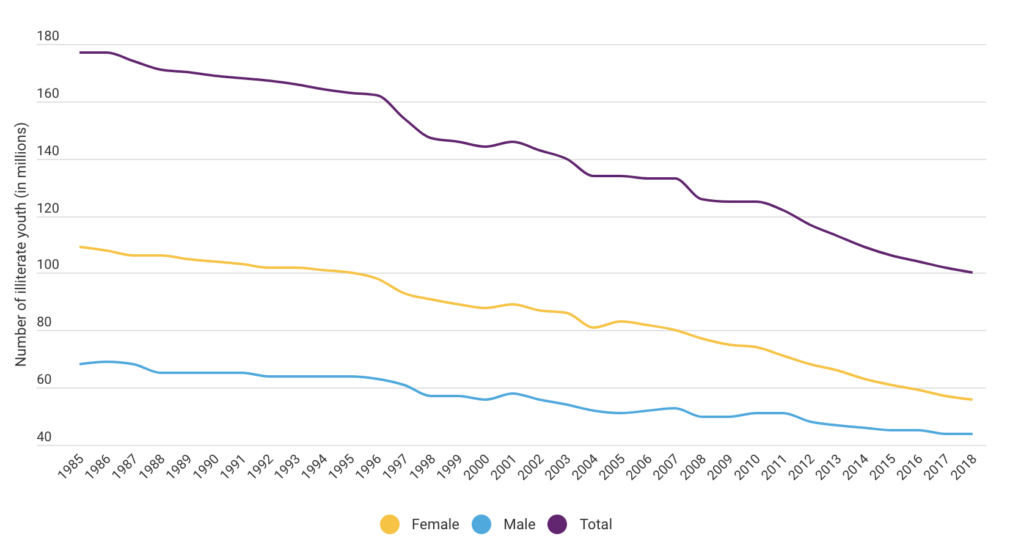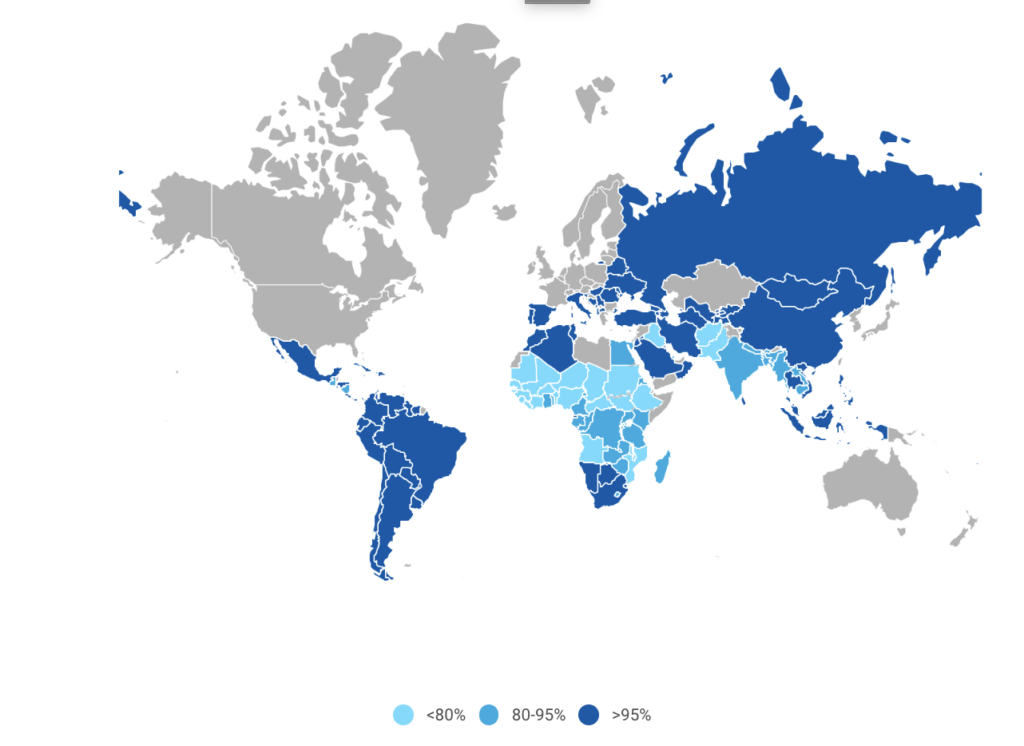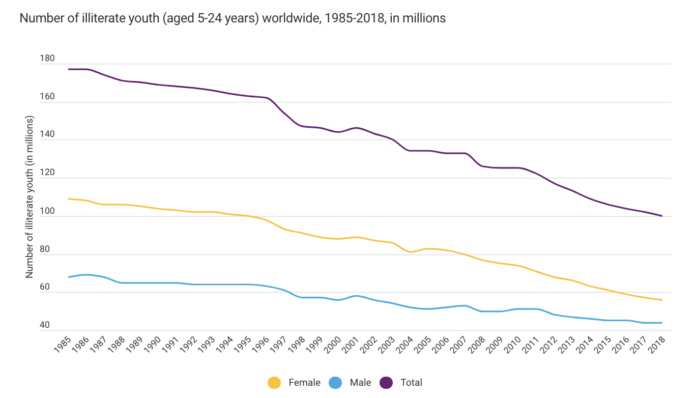By: Unicef
October 2019
Literacy among youth is rising, but young women lag behind
Number of illiterate youth (aged 5-24 years) worldwide, 1985-2018, in millions

Literacy rates among youth (aged 15 to 24) and adults are the test of an educational system, and the overall trend is positive, thanks to the expansion of educational opportunities. Globally, the youth literacy rate increased from 83 per cent to 91 per cent over two decades, while the number of illiterate youth declined from 170 million to 115 million. Regional and gender disparities persist, however. Literacy is lowest in least developed countries and higher among males than females. In the most recent years for which data are available, young women accounted for 59 per cent of the total illiterate youth population.
Literacy rates among youth are lowest in West and Central Africa and in South Asia
Youth literacy rate, population aged 15-24, both sexes, 2012-2018 (%)<80%80-95%>95%

Source: https://data.unicef.org/topic/education/literacy/#:~:text=Globally%2C%20the%20youth%20literacy%20rate,higher%20among%20males%20than%20females.
Analysis: Literacy rates have been increasing over the years. There is still discrepancies regionally and between genders.





The map in this article is interesting to show a visual display of illiteracy across the world. I this this shows how literacy is a global issue. I think because of that seeing interventions or differences fo literacy and literacy interventions in different parts of the world can help inform us more about what works and what remains to be a problem.